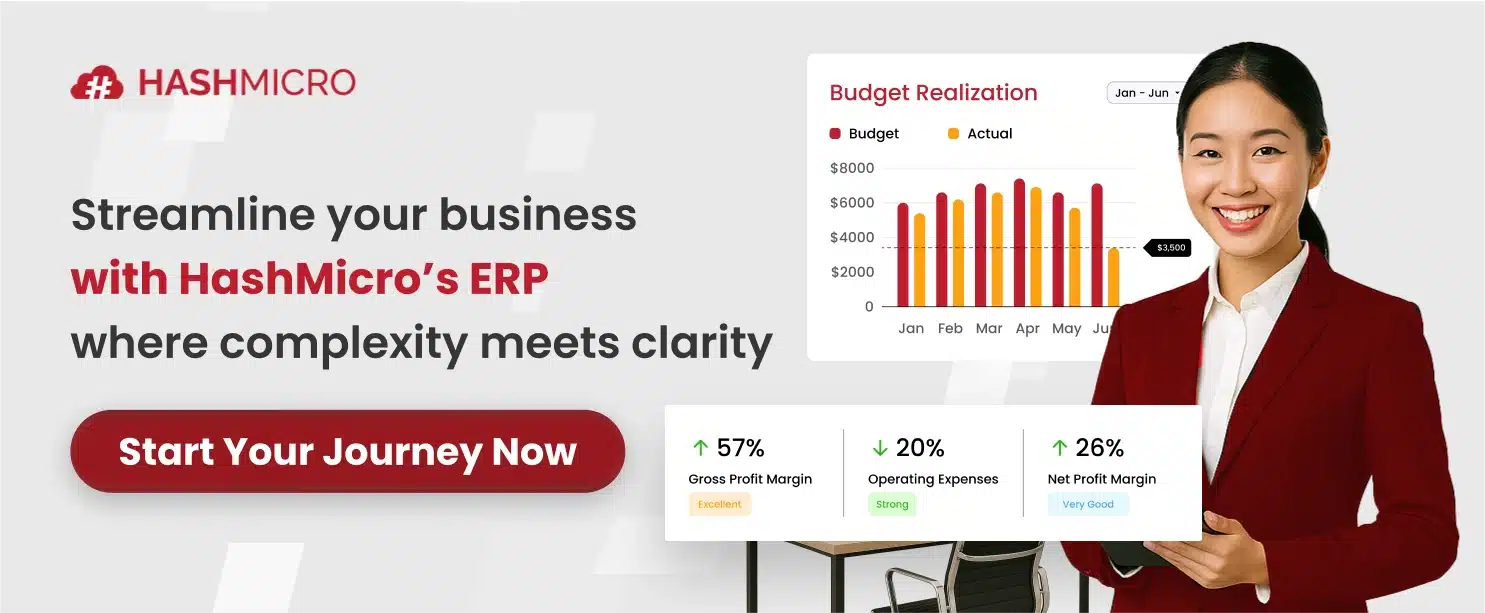Imagine investing millions into an ERP system only to find employees reluctant to use it. This is the reality many organisations face when change management is overlooked.
For C-levels, the challenge is not just deploying technology but ensuring it transforms daily operations. Misalignment, lack of governance, and resistance can quickly erode ROI and stall growth.
Research published on ResearchGate highlights that ERP projects with strong change management strategies are far more likely to succeed. This proves that structured change methodologies are not optional; they are essential for sustainable transformation.
In this article, we’ll break down the steps to create a robust ERP change management plan. Stay with us to learn strategies that will help your team embrace change with confidence.
Key Takeaways
|
What is ERP Change Management?
ERP change management is a structured approach that guides an organization from its current state to a future one to achieve expected benefits. As businesses grow, operational changes impact employees’ daily work, making effective change management critical for adoption and long-term success.
This practice focuses on how new processes affect employees and ensures smooth transitions through strong leadership and clear communication. In 2025, ERP projects go beyond software upgrades, they are enterprise-wide transformations that reshape processes, systems, and roles across the organization.
Yet, studies show over 70% of ERP initiatives fail to meet business goals, often due to poor change management. A robust strategy ensures ERP systems are not only implemented but also embraced, understood, and embedded into daily operations.
Why Do Businesses Need ERP Change Management?
ERP systems are expensive, complex, and deeply integrated into daily operations. Employees often resist moving away from familiar legacy systems, which slows progress and makes adoption difficult. Without structured change management, even well-funded projects risk delays, cost overruns, and poor outcomes.
Here are the key reasons businesses must invest in ERP change management:
1. Accelerates time-to-proficiency
Structured change management ensures employees adapt to new ERP systems faster. By guiding users through clear training and phased adoption, companies significantly reduce the learning curve.
This speeds up time-to-value and helps organisations see productivity gains from day one. Faster proficiency means ERP investments start delivering measurable returns earlier.
2. Minimises operational disruption
ERP rollouts are notorious for causing errors, downtime, and inefficiencies when users are unprepared. Change management reduces this risk by building confidence and competence across teams.
When employees understand new processes, they make fewer mistakes and keep operations stable. As a result, business continuity is preserved even during large-scale system transitions.
3. Reduces employee resistance
Resistance to change is one of the biggest barriers to ERP success. A strong change management framework helps leaders address concerns, build trust, and create champions within departments.
Employees feel included in the transition rather than forced into it. This cultural alignment makes adoption smoother and boosts morale across the workforce.
4. Improves change communication
Poor communication often leads to confusion and frustration during ERP implementation. Change management ensures leaders explain the “why” behind the shift, the user expectations, and the path to success.
Regular updates and transparent messaging prevent uncertainty from derailing progress. With everyone aligned, organisations avoid costly missteps and maintain clarity throughout the rollout.
5. Aligns transformation with business outcomes
ERP adoption is not just about technology; it’s about enabling strategy. Change management ensures the system rollout supports long-term business objectives, not only technical requirements.
It keeps stakeholders focused on measurable outcomes such as efficiency, compliance, and growth. This alignment turns ERP projects into strategic assets that drive real enterprise value.
Challenges of ERP Change Management
ERP change management is never a one-time effort; it’s a continuous process that requires foresight and discipline. Without recognising the common pitfalls, even well-planned ERP initiatives risk underperformance or failure.
Below are six key challenges every business should prepare for when driving ERP transformation:
1. Change fatigue and resistance
Employees often become sceptical when they face frequent digital shifts with unclear benefits. Overcommunication without a clear ROI creates confusion and frustration, reducing willingness to adopt new systems.
This resistance can lead to disengagement and slow ERP adoption. To overcome it, leaders must link changes directly to meaningful business and employee outcomes.
2. Misaligned governance and ownership
When IT and business units fail to align, decision-making becomes fragmented and slow. This lack of coordination erodes trust across teams and creates bottlenecks in ERP implementation.
Projects then suffer from delays and miscommunication that could have been avoided with shared ownership. Establishing clear governance ensures accountability and stronger collaboration.
3. Highly customised ERP environments
ERP systems are rarely implemented in a standard way, most organisations tailor them heavily to unique processes. While customisation brings flexibility, it complicates change management strategies.
A one-size-fits-all approach will not work in these environments, making adaptation essential. Successful transitions require customised training and strategies aligned to specific workflows.
4. Data quality and integrity issues
ERP adoption depends on reliable and accurate data to earn user trust. When data is siloed, inconsistent, or outdated, it slows adoption and undermines confidence in the system.
Poor data quality also creates costly inefficiencies in reporting and decision-making. Strong data governance is critical to ensure credibility and smooth ERP usage.
5. Cross-functional workflow inefficiencies
ERP systems connect multiple departments, so inefficiencies in one area affect others downstream. Addressing isolated processes without considering the bigger picture leads to recurring issues.
This siloed approach prevents the ERP from delivering enterprise-wide benefits. A holistic view of workflows is essential for improving collaboration and overall efficiency.
6. No continuous change model
ERP systems evolve with new features, updates, and integrations over time. Relying on one-time training means employees fall behind as the platform grows.
Without a continuous change model, adoption stagnates and benefits erode. Businesses must treat change as an ongoing journey, with regular refreshers, updates, and support built into the strategy.
Different Steps to Build an ERP Change Management Plan
Building an ERP change management plan is not about ticking boxes; it’s about creating a structured, people-focused framework that drives adoption and long-term success. Here are eight proven steps to help your organisation navigate ERP transformation with confidence:
1. Conduct a readiness assessment
Start by evaluating how prepared your teams are for ERP adoption with a readiness assessment. This process clarifies the scope of training, identifies stakeholder alignment, and highlights potential risks.
Collect key data such as system usage, technology maturity, and team size to understand your baseline. Engage with department leads and frontline users to uncover blind spots that may delay adoption.
Analysing gaps in tools, skills, and cultural readiness helps set realistic goals. With this foundation, you can design a change strategy that matches your organisation’s true needs.
2. Establish a Cross-Functional ERP Change Management Team
An ERP project affects every department, so your change management team must represent the whole organisation. This cross-functional approach prevents any group’s needs from being overlooked.
The team should include a change manager, senior authorities, stakeholders, and change agents who advocate within their departments. Each role brings accountability and ensures decisions align with business goals.
Collaboration between IT and business units avoids misaligned priorities and delays. A well-rounded team builds trust, accelerates execution, and strengthens adoption across the company.
3. Create a comprehensive ERP change communication plan
Clear communication is one of the most critical drivers of ERP success. A well-structured plan should answer three key questions for employees: What’s changing? Why now? How does it affect me?
Align your messages with ERP project milestones to keep teams updated at every stage. Provide role-specific timelines, expectations, and support resources so employees feel guided, not left behind.
Two-way channels for feedback ensure employees can clarify doubts and raise concerns. When communication is transparent and consistent, resistance drops and buy-in increases.
4. Conduct user acceptance testing and hands-on training with sandbox environments
A sandbox environment gives users a safe space to test the ERP system without impacting live operations. Employees can practice processes, solve problems, and explore features in a low-risk setting.
This hands-on learning builds confidence and reduces fear of making mistakes during go-live. IT teams can also use sandbox environments to identify bugs, test scenarios, and refine workflows.
With HashMicro ERP Solution, organisations can replicate real ERP environments to deliver more effective training and smoother adoption. Early user feedback from sandbox sessions ensures that strategies are tailored before full deployment, maximising the success of ERP implementation.
5. Enable ERP users with in-app guidance and support
Once the ERP system goes live, users need real-time guidance to avoid mistakes and build confidence. In-app support within HashMicro ERP provides contextual help directly in workflows, so employees don’t have to rely solely on memory from training.
Features like guided walkthroughs, smart tips, and task lists help users complete complex processes accurately. With HashMicro ERP, companies can deliver built-in guidance that scales across the organisation without requiring complex coding or external tools.
This approach reinforces learning while employees perform actual tasks. By supporting users in the flow of work, adoption becomes faster, smoother, and more sustainable.
6. Collect change feedback from ERP users
Employee feedback is essential to refine both your ERP system and your change management plan. Encourage users to share constructive criticism, positive reinforcement, and suggestions for improvement.
Collect feedback during beta testing, after onboarding, and whenever support tickets are raised. Surveys, interviews, and focus groups provide additional insights into user experience.
By acting on feedback, organisations increase employee engagement and build trust in the change process. This cycle of listening and adapting ensures ERP processes remain aligned with user needs.
7. Monitor ERP adoption and user behaviour to identify friction
Analytics play a key role in understanding how employees interact with the ERP system. With HashMicro ERP, businesses can track user journeys, measure process completion, and identify where employees face challenges or drop off.
Its built-in analytics help uncover adoption bottlenecks and role-specific issues, giving leaders clear visibility into system usage. HashMicro ERP also provides insights into training effectiveness and highlights areas where additional support is needed.
By continuously monitoring adoption patterns, organisations can address friction early, maintain smooth operations, and ensure long-term ERP success.
8. Use data to make data-driven ERP improvements
ERP change management does not stop after deployment; it must evolve continuously. Analyse user behaviour, system feedback, and process outcomes to guide improvements. Treat your ERP as a living platform that adapts to changing workflows and business demands.
Iterative adjustments based on real data prevent stagnation and increase ROI. By embedding continuous improvement into your strategy, you maximise long-term ERP value. Data-driven refinement ensures the system grows in line with both organisational needs and user expectations.
Conclusion
ERP change management is more than a technical upgrade; it is a structured framework that ensures employees, processes, and systems move forward together. Without it, even the most advanced ERP implementation risks delays, resistance, and wasted investment.
HashMicro ERP Software provides the complete solution to these challenges with automation, seamless integration, and powerful change management support. Trusted by enterprises across Southeast Asia, HashMicro helps businesses streamline workflows, reduce employee resistance, and achieve faster ROI from ERP transformations.
To see how HashMicro can strengthen your ERP change management strategy, schedule a free demo today. Experience firsthand how our system simplifies adoption, improves efficiency, and drives long-term business success.




















































